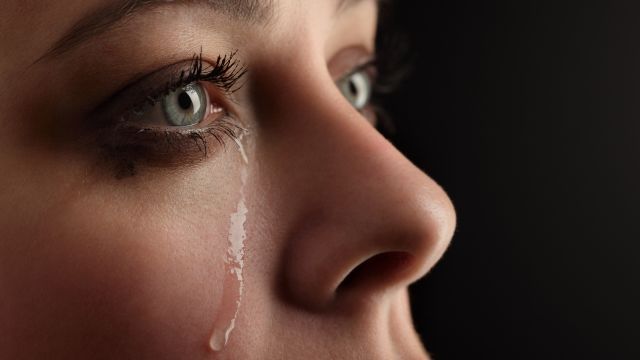In a recent group support session, an active and generous participant choked up with emotion as she spoke of the anniversary of her husband’s passing. She tried hard to stop her tears, repeatedly apologizing for them. “I really am okay,” she insisted, “I don’t know why I am crying again. It’s been five years. I’m so embarrassed.”
If she had not furiously wiped away her tears and instead looked into the caring faces around her, she would have realized immediately that there was no need for an apology. She would have spotted the responsive tears in my eyes and those of several others, signaling our deep acceptance of and empathy for the loss and grief that she was feeling.
Tears can be effective and powerful messengers, but they have always carried mixed messages. Some of us have assimilated cultural messages that warn of the inevitable disapproval that can follow a public display of tears. Many view crying as overly sentimental or a sign of emotional imbalance while others see crying as healthfully cathartic and a sign of emotional strength. Some tears may be perceived as profound, while others may be viewed as confusing or even manipulative.
How tears make us healthy
Research is validating the many health benefits of crying. When researchers at the University of Tilburg in the Netherlands showed study participants tearjerker films, the ones who cried after the films reported that their moods got even better than before they watched the film compared to the non-criers whose moods stayed the same.
What's behind the science of crying
There is a physiological reason for this difference in mood. Biochemist Dr. William Frey found that there is a chemical difference between emotional tears (crying when upset) and reflex tears (ones that occur when cutting onions). When we feel stressed and upset, there is a buildup of chemicals in the body and crying helps to reduce that. Emotional tears contain high levels of adrenocorticotropic hormone (ACTH). Removing this chemical from the body by crying is good for you because it triggers the stress hormone, cortisol, which is directly linked to the inflammatory processes leading to heart disease. While the biology behind this release is now better understood, the newer studies also validate a long-held concept in human psychology
How tears bring us together
This hormonal release also helps to make our relationships stronger. “Crying is a highly evolved behavior,” evolutionary biologist Dr. Oren Hasson of Tel Aviv University has said. “Tears give clues and reliable information. My analysis suggests that by blurring vision, tears lower defenses and reliably function as signals of vulnerability, a cry for help, a mutual display of attachment and as a group display of cohesion.”
While the reason for our tears is unique to each of us, our shared recognition of the significance and validity of tears is necessary. Tears alert us that invaluable information may be forthcoming and call us to pay close attention to ourselves and to others. They can build a bridge of understanding from one heart to another in order to initiate a deeper connection. While tears relay frustration and loss, they can also convey messages of joy, victory, love and reunion. All of these emotions bring us closer together.
How hiding tears hurts
Attempts at learning how not to cry are an effort to control how much we reveal to others. While this is sometimes warranted in certain situations that require self-protection, an over reliance on the ability to suppress emotions can result in an increase in emotional isolation. Lack of emotional and social intimacy has been proven to be a risk factor for heart disease.
Let it flow
While some may believe that crying is a factor of maturation and so the older we get the less we should cry, I respectfully disagree. In my many years as a psychotherapist, I have come to appreciate the expression of tears as a sign of tenderness, not weakness. I have learned that the sharing of this vulnerability requires and is an indicator of inner strength. I continue to learn firsthand what true courage looks like in the presence of those who are bravely willing to share their tears. When another “gifts” me with their tears, and the depth and range of feeling that catalyzed them, I feel privileged to be a part of this deeply felt and very sacred aspect of what it is to be human.
This content was originally published on Ornish Living.






